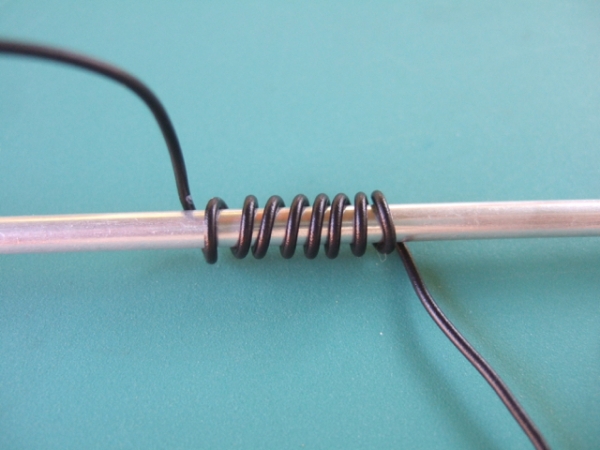From the Velo Lumino website:
Velo Lumino - Online : About
Pro tip: how to create an elastic coiled wire for dynamo wiring
August 27, 2015August 27, 2015 somervillebikesLeave a comment
One tricky place for wiring is between the fork and the frame, regardless if you are running the wire internally or externally to the frame. Unless your bike has a carbon brush in the steerer
ŕ la René Herse, the wire has to pass externally from the fork crown or the fender to a hole in the downtube. What’s more, the wire has to have slack in it to allow the fork to turn without pulling the wire. I’ve seen all sorts of solutions to this, but none of them are perfect. The best approach I’ve seen is a wire that coils like an old fashioned telephone cord. Most of the Installations I’ve seen this way get it wrong. You can coil wire around a pencil or something similar, but it won’t keep its shape: one pull and it the coil straightens back out. That’s because when wire is made, the plastic coating is melted on and fused while the wire is held straight and taut, and then cooled rapidly. So even when the wire gets wound onto a spool for distribution, the plastic has “memory” and wants to straighten. Depending on the formulation of the plastic wire wrapping, it’s possible to “re-train” it keep the coil shape simply by heating it enough but not too much– or it will melt. Here’s what you’ll need: wire, a narrow rod like a fender stay (you can even use one on your bike without removing it), and a heat gun (a hair dryer doesn’t get hot enough).
- coil the wire tightly around a narrow rod, like a fender stay (you can even do this on the bike!). Pencils and pens are too thick (and pens might melt).
- hold the ends in place or tape them in place so the coil doesn’t unravel when you let go.

- use the heat gun to heat the wire evenly– test a small piece beforehand to make sure it doesn’t melt.
- allow the wire to cool. Sometimes cooling it rapidly by running it under cold water for a few seconds helps the wire learn its new shape.
Voila! You’ve now got a coiled wire that will remember its shape even after repeated stretching. Note that not all wire can be “re-trained” this way, but the
premium 22AWG wire that we sell works well for this trick!